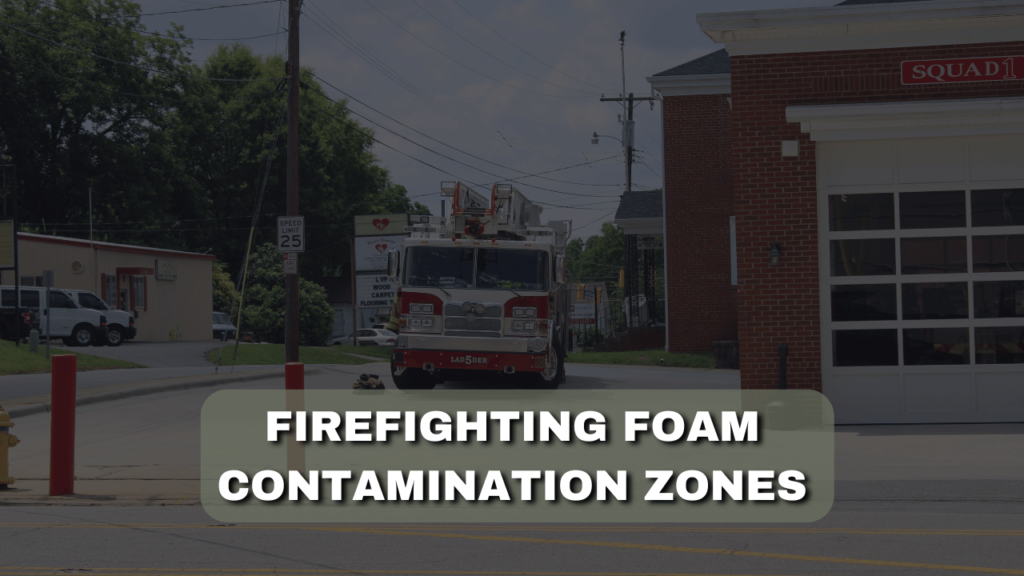Living near firefighting foam contamination zones increases your health risks due to exposure to harmful per- and poly-fluoroalkyl substances (PFAS). These substances can taint the air, water, and soil around you, leading to potential health concerns.
This article provides essential advice for managing your health in such environments. By understanding and acting on these guidelines, you can better safeguard yourself and your family from the adverse effects of PFAS contamination.
Understanding the Risks of Firefighting Foam Contamination
Firefighting foams, widely used for fire suppression, often contain PFAS chemicals linked to serious health risks. These substances persist in the environment, contaminating water, soil, and air, potentially leading to cancer, liver damage, and other health issues. Understanding how it infiltrates water and food sources is crucial for managing exposure and safeguarding your health.
ScienceDirect explains that PFAS exposure causes oxidative stress, damaging cells and leading to inflammation, reproductive diseases, and developmental problems. The mixture effects of PFAS on health, including cancer and neurological issues, are still unclear. Contaminated drinking water remains a global issue, with many treatment systems inadequately addressing PFAS.
Firefighting foams like Aqueous Film-Forming Foam (AFFF) are particularly concerning due to their PFAS content. Exposure to AFFF has led to a wave of lawsuits from individuals seeking compensation for cancer and other health problems. The AFFF foam cancer lawsuit highlights the widespread environmental impact of these foams.
These claims argue that manufacturers failed to warn the public about the dangers of PFAS in AFFF despite being aware of the risks. According to TorHoerman Law, gathering evidence like medical records, cancer diagnoses, and location history is crucial for a successful claim. Legal professionals help affected individuals document exposure to AFFF and support their pursuit of compensation for damages.
Monitoring and Testing for Contaminants
Testing your water, soil, and air for PFAS and other harmful substances helps identify contamination levels. Utilizing certified laboratories ensures the accuracy of results, allowing you to make informed decisions to protect your health.
Consistent testing is key to understanding contamination levels and effectively mitigating exposure risks. By staying informed, you can take necessary actions to manage and reduce your risk of health issues associated with environmental contamination.
What actions should I take if my water test shows elevated contaminant levels?
If your water test reveals high levels of contaminants, immediately discontinue using the water for drinking, cooking, and bathing. Install a certified PFAS removal filter to address the contamination and use bottled water as a temporary alternative. Report the contamination to local authorities and consult with environmental experts for further guidance on mitigating risks and addressing the issue.
Implementing Water Safety Measures
Installing advanced filtration systems that effectively remove PFAS is crucial to ensuring water safety in areas affected by contamination. Regular water testing helps monitor contamination levels, and using bottled or alternative water sources for drinking and cooking can further minimize exposure. Stay informed about local water quality reports and adhere to safety guidelines to safeguard your household from potential health risks.
The NIEHS supports these efforts by funding research, conducting studies, and working with agencies like the EPA. These efforts link water safety measures to understanding PFAS health risks, improving detection technologies, and developing solutions to reduce public exposure. Integrating these practices and staying informed can significantly reduce the risk of consuming contaminated water and protect your health.
Protecting Your Home and Environment
Use air purifiers to reduce indoor PFAS levels and clean dust and surfaces frequently to prevent buildup. Avoid using products known to contain PFAS, such as certain cleaning agents and cookware. Proper home drainage and avoiding known sources help prevent contamination from spreading and protect your living environment.
ITRC states protecting your home and environment from PFAS is crucial due to their widespread presence in air, dust, and precipitation. Outdoor PFAS concentrations can range from 1–200 pg/m³, while indoor levels are often higher, reaching up to 300,000 pg/m³. These chemicals can also be found in settled dust and precipitation, highlighting the need for comprehensive protection measures.
How can I manage my garden and soil to prevent the spread of contaminants?
Regularly test your soil for PFAS and other harmful substances to monitor contamination levels. Use clean, uncontaminated soil in raised beds to reduce the risk of contaminant uptake by plants. Planting non-food crops or using soil amendments that neutralize contaminants can also help prevent their spread.
Maintaining Personal Health and Wellness
Maintaining personal health in contamination zones involves regular medical check-ups and staying informed about PFAS-related health risks. Minimize exposure by using filtered water and avoiding contaminated soil and dust.
Maintaining a balanced diet, regular physical activity, and medical exams are crucial strategies for managing risks from environmental contamination.
ATSDR states systematic blood testing for PFAS can help assess community-wide exposures and individual levels. Clinicians use CLIA-certified labs to measure PFAS in blood, which reflects either recent or past exposure. Testing helps guide exposure reduction and health promotion but can’t pinpoint exact exposure sources or predict future health issues.
What signs or symptoms indicate that I should consult a doctor?

If you experience unexplained weight loss, persistent fatigue, skin rashes, or gastrointestinal issues, seek medical attention. Chronic headaches, respiratory problems, or unusual symptoms, especially after contaminant exposure, should prompt an immediate visit to the doctor. Early detection and medical consultation are crucial for managing the potential health effects.
Diet and Nutrition Considerations
Focus on a balanced diet of fruits, vegetables, and whole grains to support overall well-being. Avoid foods that may be contaminated with PFAS, such as those processed with specific packaging materials.
Drinking filtered water helps flush out potential toxins. Staying hydrated and maintaining a nutritious diet can also reduce exposure and support the body’s ability to handle environmental contaminants effectively.
The FDA notes that PFAS, persistent chemicals used in various products, can contaminate food through packaging, cookware, and polluted areas. The FDA has enhanced testing methods to identify PFAS in foods and assess risks, addressing health concerns linked to these chemicals. Continuous testing aims to monitor and reduce exposure to the food supply.
Staying Healthy Amid Contamination Risks
Understanding the risks, monitoring for contaminants, and implementing safety measures are essential to managing exposure. To mitigate health risks effectively, prioritize personal health and nutrition.
By staying informed and proactive, you can reduce the impact of contamination on your well-being and maintain a safer living environment. Continuous awareness and action are key to managing health risks and ensuring a healthier living space.



